
How to Use MICS-4514 NO2 sensor: Examples, Pinouts, and Specs
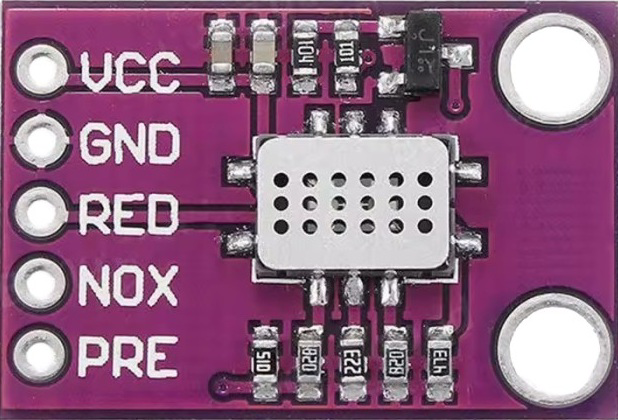
 Design with MICS-4514 NO2 sensor in Cirkit Designer
Design with MICS-4514 NO2 sensor in Cirkit DesignerIntroduction
The MICS-4514, manufactured by SGX, is a compact and reliable gas sensor designed to detect nitrogen dioxide (NO2) levels in the air. It operates on the principle of resistive change in the presence of NO2 gas, providing an analog output proportional to the gas concentration. This sensor is widely used in air quality monitoring systems, environmental applications, and industrial safety equipment.
Explore Projects Built with MICS-4514 NO2 sensor
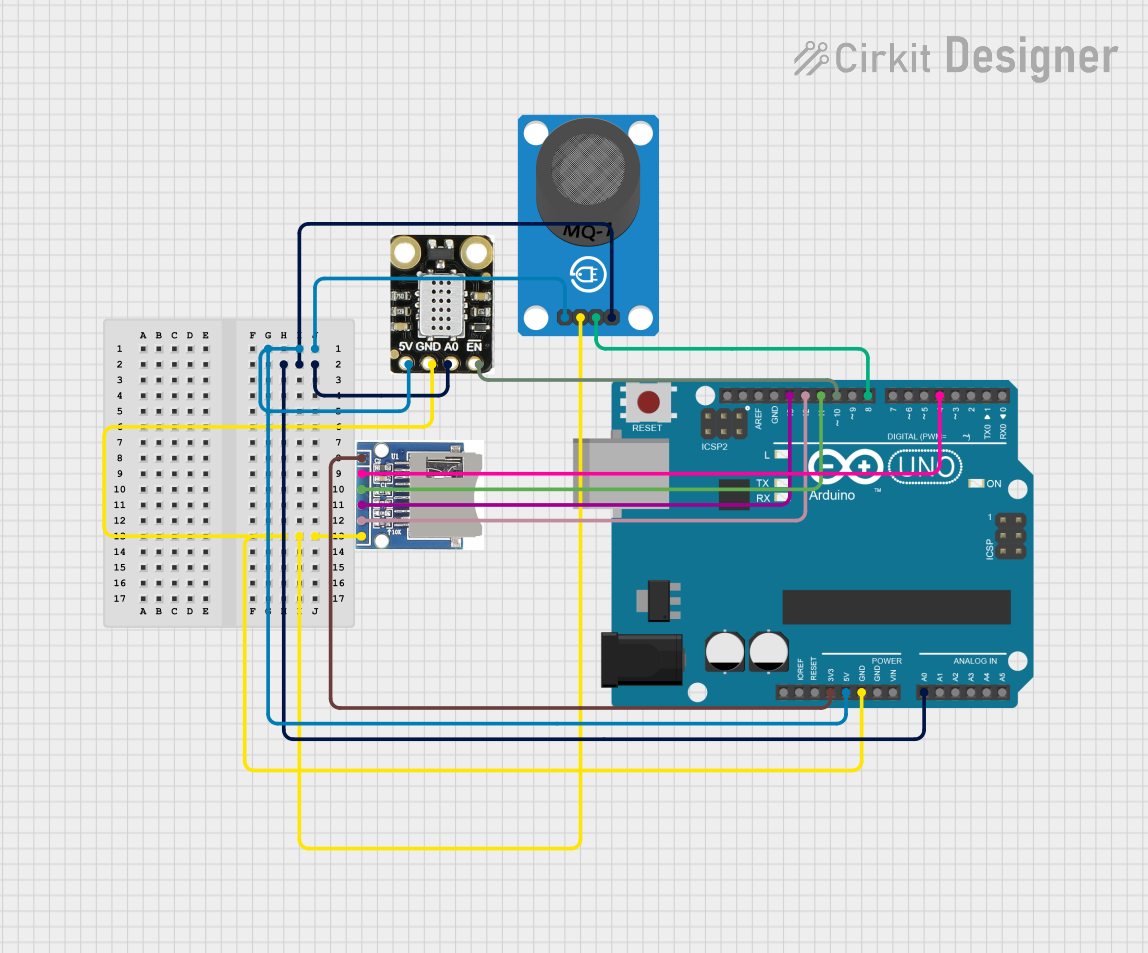
 Open Project in Cirkit Designer
Open Project in Cirkit Designer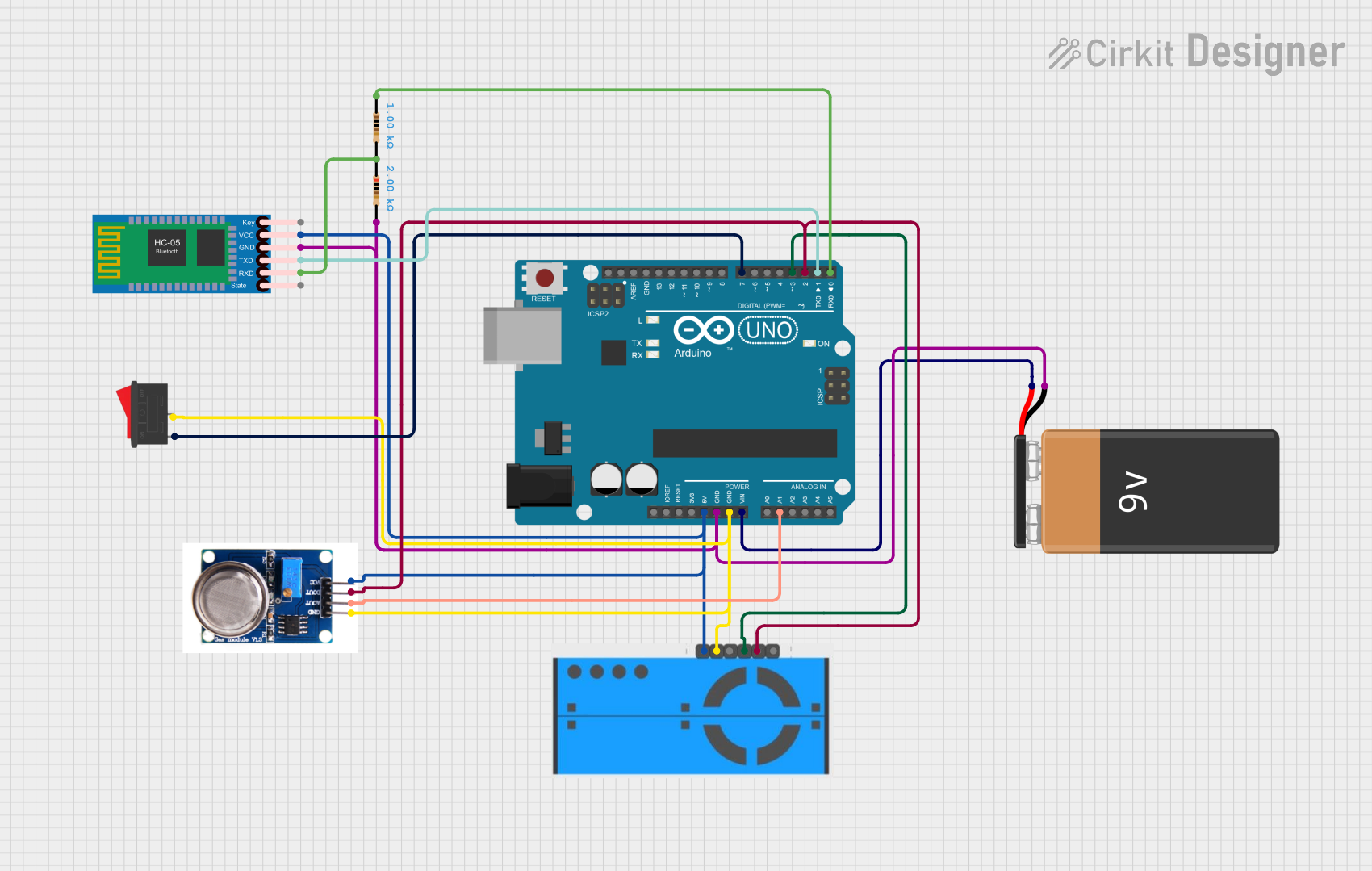
 Open Project in Cirkit Designer
Open Project in Cirkit Designer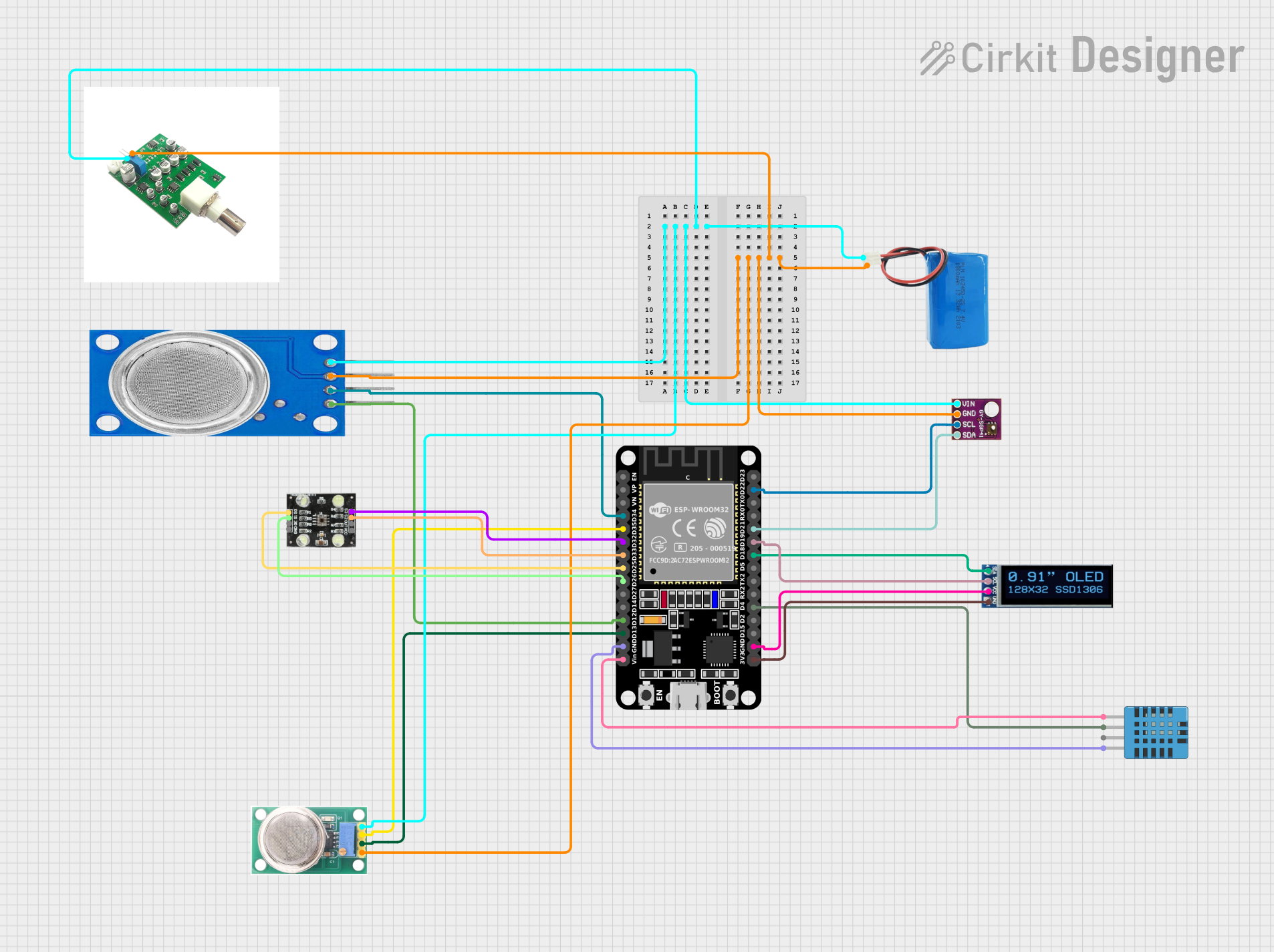
 Open Project in Cirkit Designer
Open Project in Cirkit Designer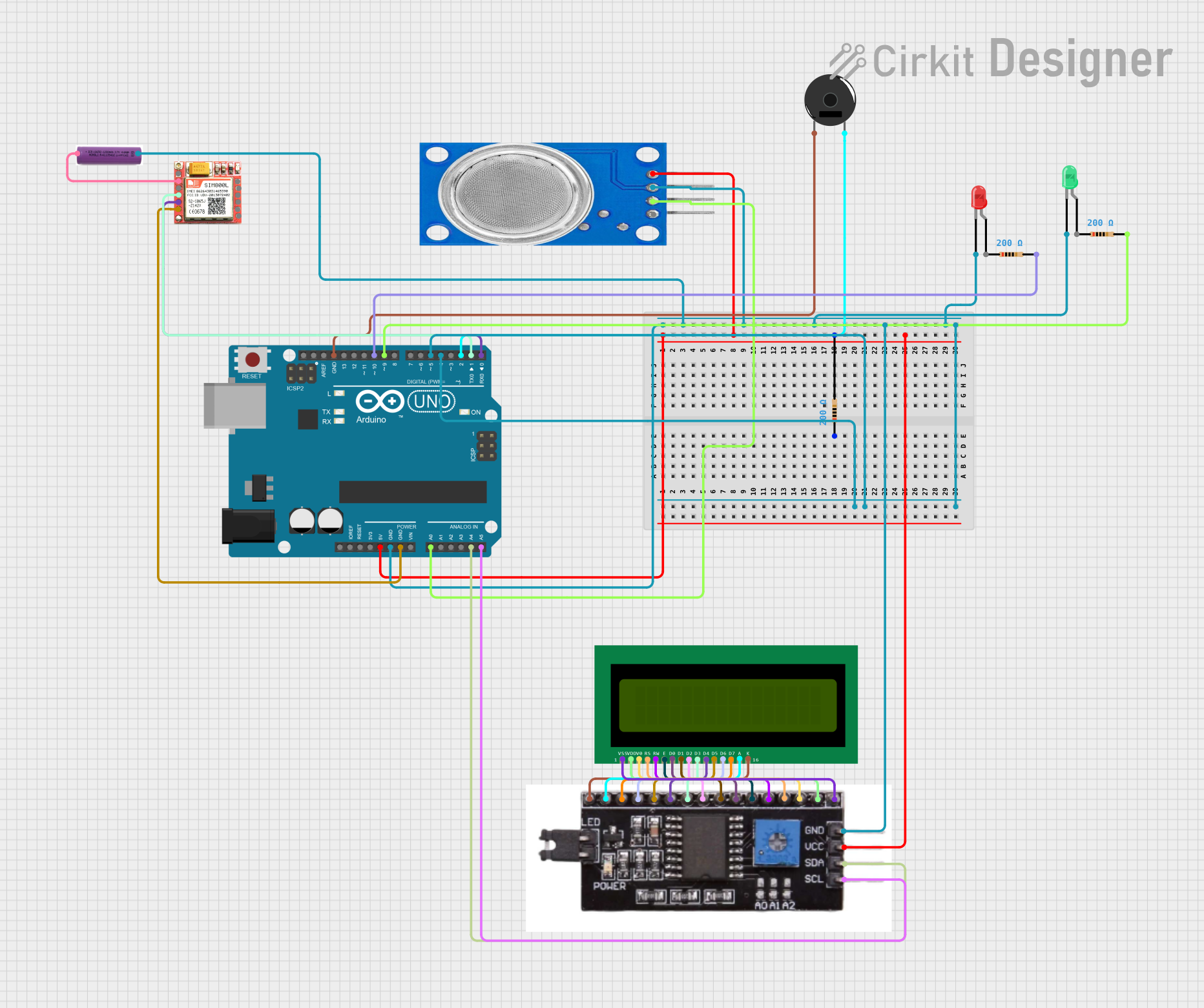
 Open Project in Cirkit Designer
Open Project in Cirkit DesignerExplore Projects Built with MICS-4514 NO2 sensor

 Open Project in Cirkit Designer
Open Project in Cirkit Designer
 Open Project in Cirkit Designer
Open Project in Cirkit Designer
 Open Project in Cirkit Designer
Open Project in Cirkit Designer
 Open Project in Cirkit Designer
Open Project in Cirkit DesignerCommon Applications
- Air quality monitoring systems
- Environmental pollution detection
- Industrial safety and gas leak detection
- Smart home and IoT devices for air quality tracking
Technical Specifications
The MICS-4514 sensor is a dual-sensor device capable of detecting both nitrogen dioxide (NO2) and carbon monoxide (CO). Below are the key technical details:
Key Specifications
| Parameter | Value |
|---|---|
| Manufacturer | SGX |
| Part Number | MICS-4514 |
| Gas Detection | NO2 and CO |
| Operating Voltage | 5V DC |
| Heater Voltage | 1.4V DC (typical) |
| Power Consumption | 56 mW (typical) |
| Operating Temperature | -30°C to +85°C |
| Sensitivity Range (NO2) | 0.05 – 5 ppm |
| Sensitivity Range (CO) | 1 – 1000 ppm |
| Output Signal | Analog (resistance change) |
| Dimensions | 7.6 mm x 5 mm x 1.55 mm |
Pin Configuration and Descriptions
The MICS-4514 sensor has a total of 6 pins. The pin configuration is as follows:
| Pin Number | Pin Name | Description |
|---|---|---|
| 1 | Heater (H1) | Heater connection for the NO2 sensor |
| 2 | Heater (H2) | Heater connection for the CO sensor |
| 3 | Sensing (A1) | Analog output for NO2 detection |
| 4 | Sensing (A2) | Analog output for CO detection |
| 5 | Ground (GND) | Ground connection |
| 6 | Supply (VCC) | Power supply (5V DC) |
Usage Instructions
How to Use the MICS-4514 in a Circuit
- Power Supply: Connect the VCC pin to a regulated 5V DC power source and the GND pin to the ground.
- Heater Connections: The heater pins (H1 and H2) require a separate voltage supply (typically 1.4V DC). Use a current-limiting resistor to ensure proper operation.
- Analog Outputs: Connect the A1 pin to an analog input on your microcontroller to read NO2 levels. Similarly, connect the A2 pin to read CO levels.
- Signal Conditioning: The sensor outputs an analog signal that may require amplification or filtering for accurate readings.
Important Considerations
- Preheating: Allow the sensor to preheat for at least 24 hours before taking measurements to ensure stability.
- Calibration: Calibrate the sensor in a controlled environment to improve accuracy.
- Environmental Factors: Avoid exposure to high humidity or corrosive gases, as these can affect sensor performance.
- Placement: Install the sensor in a location with good airflow for accurate gas detection.
Example Code for Arduino UNO
Below is an example of how to interface the MICS-4514 with an Arduino UNO to read NO2 levels:
// MICS-4514 NO2 Sensor Example Code
// This code reads the analog output from the NO2 sensor (A1 pin) and displays
// the value on the serial monitor. Ensure proper connections as per the pinout.
const int NO2_Pin = A0; // Analog pin connected to A1 (NO2 output)
int NO2_Value = 0; // Variable to store the sensor reading
void setup() {
Serial.begin(9600); // Initialize serial communication at 9600 baud
pinMode(NO2_Pin, INPUT); // Set the NO2 pin as input
}
void loop() {
NO2_Value = analogRead(NO2_Pin); // Read the analog value from the sensor
Serial.print("NO2 Sensor Value: ");
Serial.println(NO2_Value); // Print the value to the serial monitor
delay(1000); // Wait for 1 second before the next reading
}
Notes:
- Replace
A0with the appropriate analog pin if using a different microcontroller. - Use a voltage divider or amplifier circuit if the sensor output is too weak for direct reading.
Troubleshooting and FAQs
Common Issues and Solutions
No Output Signal:
- Check the power supply connections (VCC and GND).
- Ensure the heater voltage (H1 and H2) is correctly applied (1.4V DC).
Inconsistent Readings:
- Allow the sensor to preheat for at least 24 hours.
- Verify that the sensor is not exposed to high humidity or extreme temperatures.
Low Sensitivity:
- Calibrate the sensor in a controlled environment.
- Check for proper airflow around the sensor.
Arduino Not Reading Values:
- Ensure the analog pin is correctly connected to the sensor output (A1 or A2).
- Verify that the Arduino's ADC is functioning properly.
FAQs
Q: Can the MICS-4514 detect gases other than NO2 and CO?
A: The sensor is specifically designed for NO2 and CO detection. While it may respond to other gases, the readings will not be accurate or reliable.
Q: How long does the sensor last?
A: The typical lifespan of the MICS-4514 is around 5 years under normal operating conditions.
Q: Can I use the sensor outdoors?
A: Yes, but ensure it is protected from direct exposure to rain, dust, and extreme environmental conditions.
Q: Do I need to amplify the sensor output?
A: In most cases, the analog output can be read directly by a microcontroller. However, for higher accuracy, signal conditioning may be required.
Q: How do I calibrate the sensor?
A: Calibration involves exposing the sensor to known concentrations of NO2 and CO and adjusting the readings accordingly. This process requires specialized equipment.